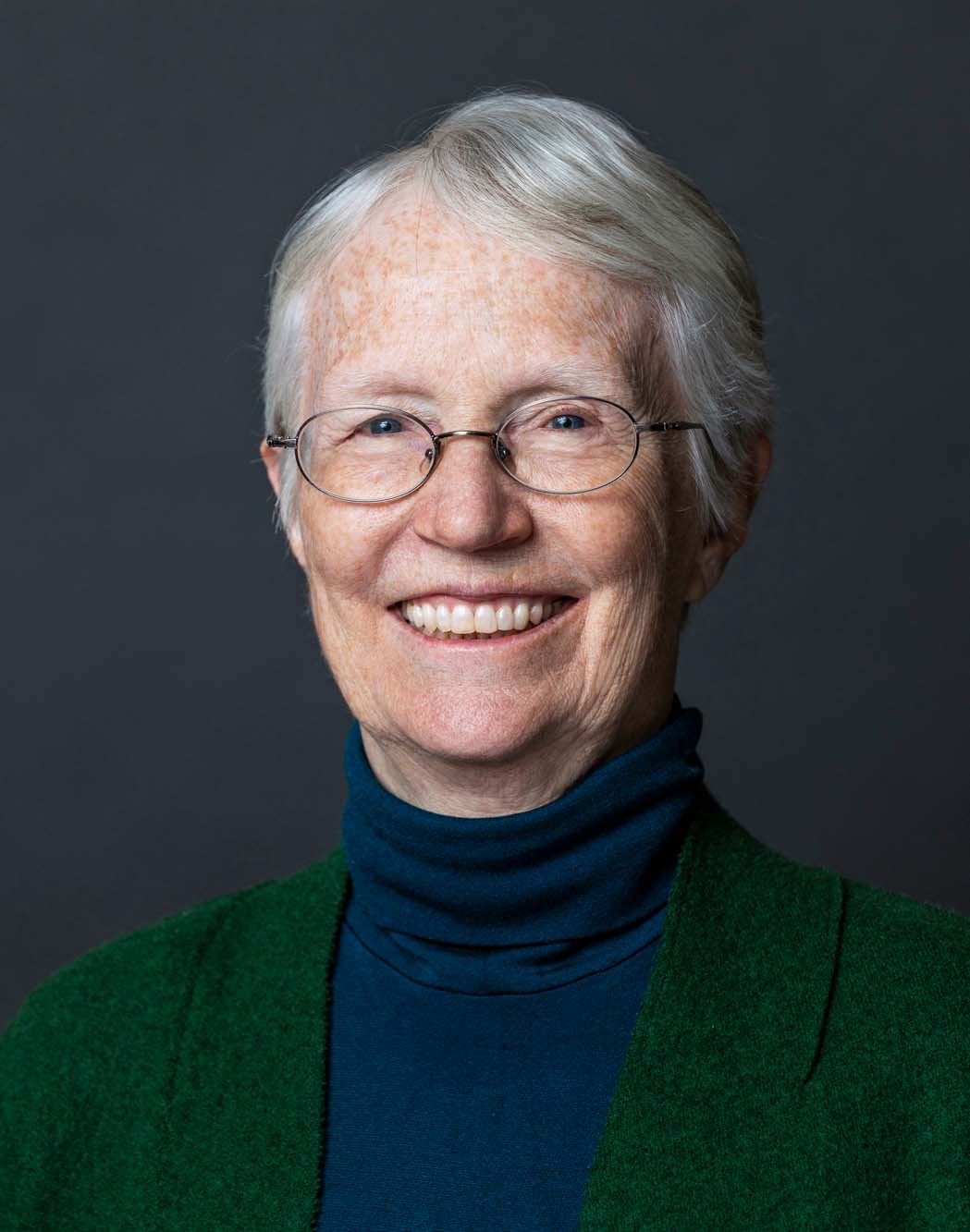
Cynthia Rosenzweig
UNITED STATES
Dr. Cynthia Rosenzweig of the United States will receive the 2022 World Food Prize for her seminal contributions to understanding and predicting the impacts of the interaction between climate and food systems. Through designing and leading rigorous, collaborative observational and modeling research, she provided the evidence used by thousands of decision-makers in more than 90 countries to both mitigate and adapt to climate change in local, national and global food systems.
Biography
Rosenzweig spent four decades cultivating our understanding of the biophysical and socio-economic impacts that climate change and food systems have on each other – most recently by founding the Agricultural Model Intercomparison and Improvement Project (AgMIP), a global, transdisciplinary network of more than 1000 leading researchers in climate and food systems modeling. Models are powerful computational tools used in climate, agricultural and economic research to conceptualize current interactions and project future trends. Rosenzweig is an innovator in modeling science, leading vital studies that have shaped the global debate on climate change and agriculture. An agronomist and climatologist, she has been a leader in the field of food and climate since the early 1980s. She has shaped our understanding of the tight relationship between food systems and climate change–that is, severe fluctuations in climate threaten our capacity to feed and nourish humanity while effective mitigation and adaptation strategies both curb climate change and enhance sustainable food production.
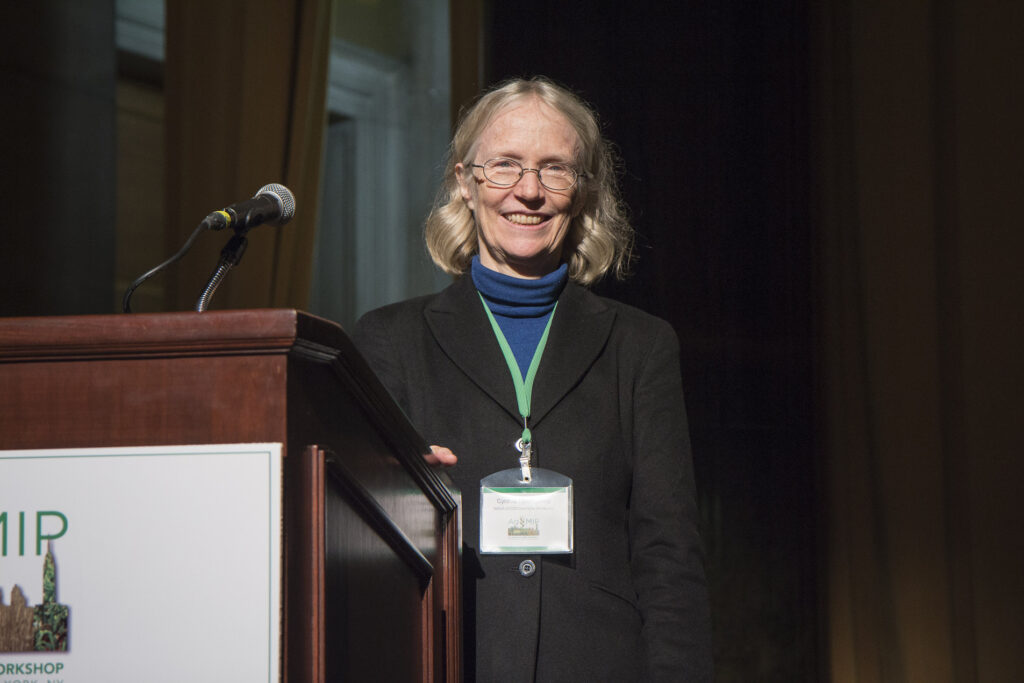
Rosenzweig realized early on that climate change is one of the most significant, pervasive and complex challenges currently facing the planet’s food systems. She completed the first transdisciplinary model projections of how climate change will affect food production in North America and globally, and she was one of the first scientists to document that climate change was already impacting the cultivation of our food supply. Her early work contributed an important methodological breakthrough in early climate change impact assessments and established the foundations for current work in this field. Now a Senior Research Scientist and head of the Climate Impacts Group at the Goddard Institute for Space Studies (GISS), part of NASA’s Goddard Space Flight Center, Rosenzweig started her career as a farmer. Her research centers farmers to plan and implement groundbreaking mechanisms that foster resilience to climate change. “I’m not a pessimistic person,” Rosenzweig said. “This is how I look at it: Global climate change is the most important challenge that we face as a human race. But it is becoming a major impetus to move the planet toward sustainability.”
Confronting Climate Change
As a graduate student working for GISS on the second floor of 2880 Broadway, New York City, in the early 1980s, Rosenzweig heard an important question that had filtered down through the organization from the seventh floor from director Jim Hansen: With the climate changing so dramatically, what will happen to food? As the only agronomist working for GISS at the time, Rosenzweig took up this question, on which she has based four decades of her career. In 1985, Rosenzweig published her first journal article on modeling the potential impacts of climate change on wheat-producing regions of North America, and how wheat-growing crop zones might shift with a changing climate. She soon broadened her focus to modifying crop models, with agronomists Joe Ritchie, Jim Jones and others, to more accurately forecast disparities in yield by including responses to increasing CO2 and global climate model projections. In this work, she identified the importance of using multiple models in research to achieve greater scientific rigor and more meaningful forecasts. “We were using more than one model because if you only use one model, you start to believe it!” Rosenzweig said.
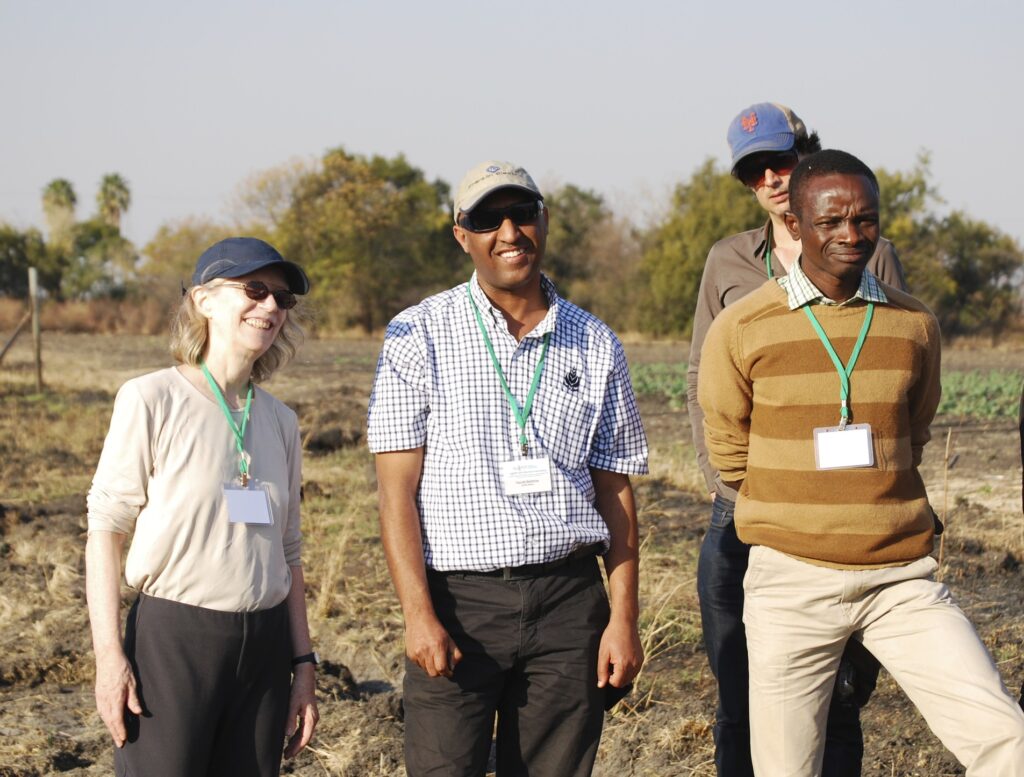
In the United States, Rosenzweig has played a critical role in the growing understanding of and sensitivity to what is needed for strengthening resilience to climate change. She led the agriculture sector’s work in the Environmental Protection Agency’s first assessment of the potential effects of climate change on the United States in 1988, creating the earliest projections of the impact of climate change on the nation’s agricultural regions. A long-time member and Fellow of the American Society of Agronomy (ASA), she brought the issue of climate change to the ASA’s attention and organized the initial sessions on the issue in the ‘80s. She also enlisted economist Rich Adams to bring together climate, biophysical and socio-economic models to produce the first economic projections for agriculture in the United States, published in Nature in 1990. Rosenzweig kept her eye on impacts in other parts of the world as well as the U.S. She co-authored the first-ever study assessing the potential impact of climate change on the world food supply, published in Nature in 1994, applying the same methods used in the U.S. national assessment to a global scale. The results of this study made it very clear that low- and middle-income countries would bear the brunt of climate change and suffer disproportionate negative effects. An important mentor and colleague was 2012 World Food Prize Laureate Dr. Daniel Hillel, with whom Rosenzweig collaborated on many studies. She first partnered with him in 1993 to compare model projections to real-world climate disasters such as the Dust Bowl. They found that the Dust Bowl could be considered a preliminary analog to the effects predicted by the climate change models, setting the world on a trajectory of more and more severe droughts and extreme crises in agriculture.
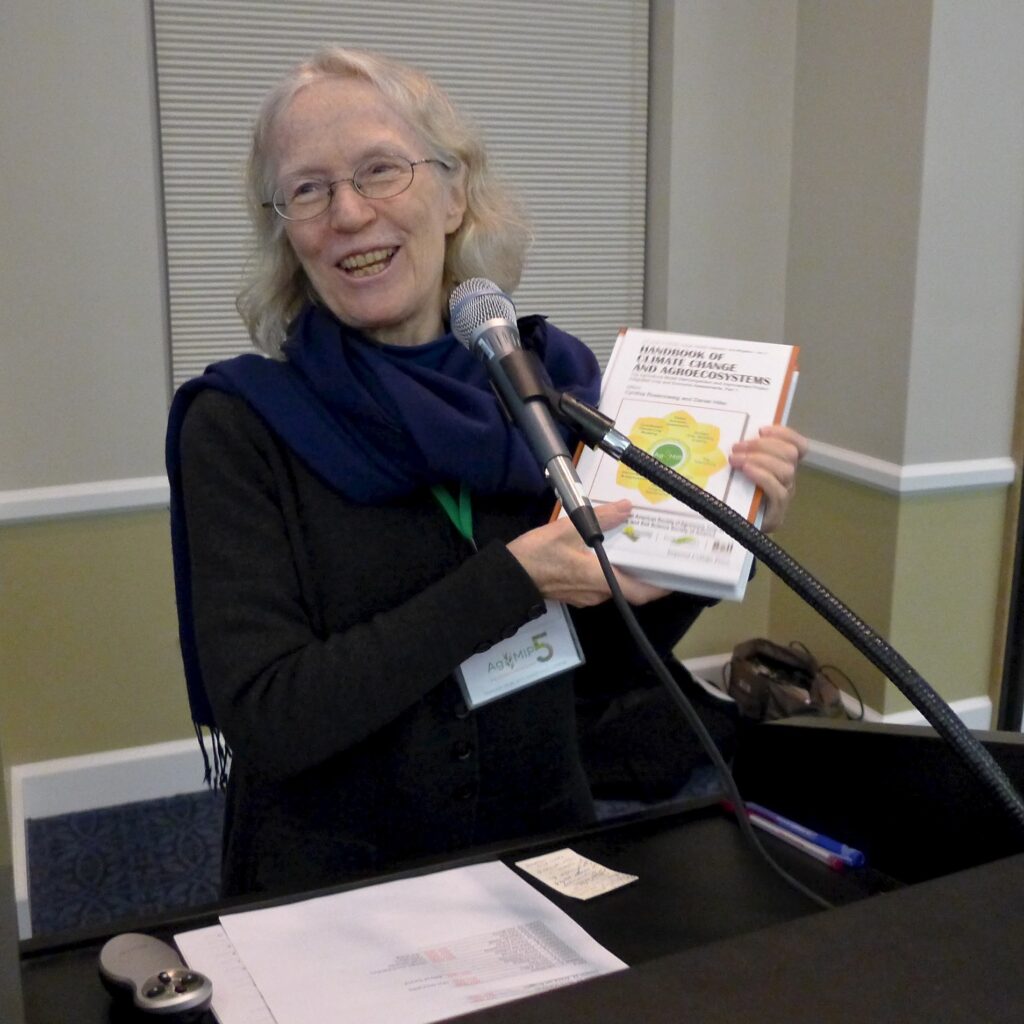
Her research brought the threat of climate change impacts on food to the world’s attention through her participation on the Intergovernmental Panel on Climate Change (IPCC). Rosenzweig was Coordinating Lead or Lead author on three global assessments, including the IPCC Fourth Assessment in 2007, which received the Nobel Peace Prize. She was also co-Lead author of the Food Security Chapter of the recent IPCC Special Report on Climate Change and Land in 2019. Her work with IPCC contributed to the scientific foundation of the United Nations Framework Convention on Climate Change (UNFCCC), the process which led to the Paris Agreement on Climate Change in 2015. Her research directly supports work in more than 20 countries to develop National Adaptation Plans and National Determined Contributions for the UNFCCC. Rosenzweig recognized the necessity of going beyond modeling to determine what observable impacts were already coming about as a result of warming temperatures. As a coordinating lead author of Working Group II for the 2007 IPCC Fourth Assessment, she and co-authors compiled a database of more than 28,000 entries of observed physical and biological changes occurring on all continents and most oceans. She was able to show that a significant number of these shifts were attributable to anthropogenic climate change at the global scale, and in 2008 she and her team published a study that extended these results to continental regions. With her remarkable body of research and publications, Rosenzweig continued to look for ways to improve scientific research methods and speed up the adoption of necessary, evidence-supported adaptation and mitigation strategies. “Climate change research isn’t just something for the future; it’s affecting agriculture and food already and needs to be taken into account in policy decisions now,” said Rosenzweig.
The AgMIP Advantage
During a coffee break at a conference in Florida in 2008, Rosenzweig had the idea for what would become the gold standard for agricultural and climate modeling research and application. She immediately began building a vast network and in 2010 founded the Agricultural Model Intercomparison and Improvement Project (AgMIP), a global community of experts dedicated to advancing methods for improving predictions of the future performance of agricultural and food systems in the face of climate change. “Modeling groups have brought their crop models to AgMIP so that we can work on them together for the first time,” said Rosenzweig. “Before, each modeling group would be working separately. Now we’re all working together jointly so that we can nail uncertainties, understand the processes, improve the models and thus make better projections so we can develop adaptation strategies for all different regions of the world.”
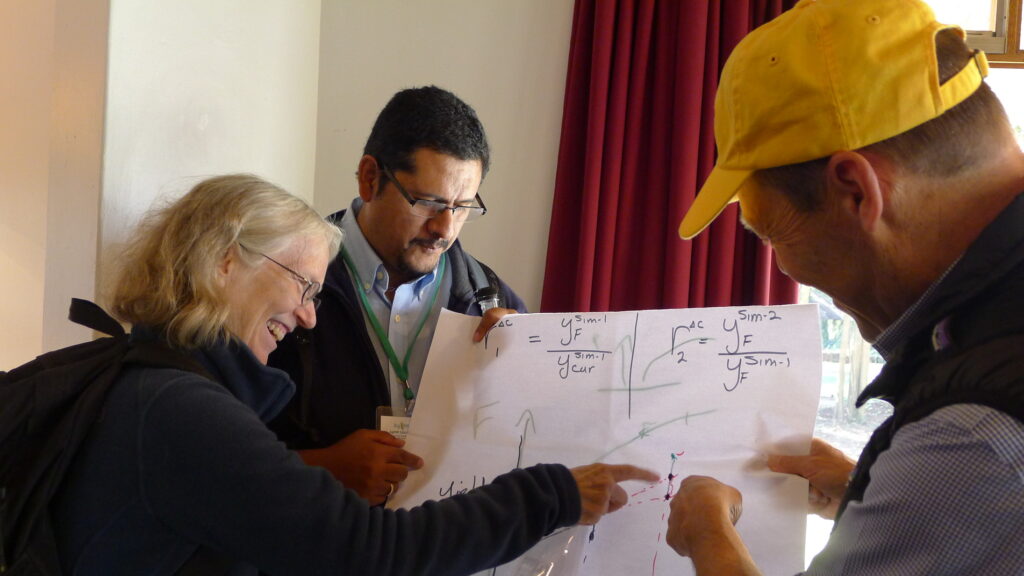
By comparing multiple models brought together under AgMIP, Rosenzweig and AgMIP teams developed protocols to understand and improve model performance in diverse conditions, especially in situations where limited data are available, as is the case in many rural and tropical areas. AgMIP also coordinated global and regional assessments across many different disciplines and scales. This work began to answer the question of how we can manage risks and develop resilience to extreme weather, climate change and other disruptions to agricultural production and food security now and in the future. Rosenzweig knew that creating more accurate models that produced more detailed data, while important, would mean nothing without action. She therefore brought researchers to collaborate with other stakeholders, including policymakers and on-the-ground practitioners, in order to address the complex challenges of climate change and ensure that their approaches were farmer-focused. Incorporating stakeholders’ knowledge greatly enhanced the effectiveness of adaptation interventions and created trust and buy-in among stakeholders for these methods. “Previously, scientists would produce a result, and then they would pass it off to society,” said Rosenzweig. “Such ‘silos’ do not work for finding solutions to climate change. What we’ve learned is that there needs to be far more interaction and integration among different groups of society as we confront the climate change challenge.” Her work with AgMIP is applied at local, regional, national and global scales and covers many different crops, soil and water processes, farming systems, biophysical parameterizations, climate, economics and policy. AgMIP programs are carried out in more than 20 low- and middle-income countries, involving over 200 policymakers and practitioners. More than 90 countries were represented in the AgMIP8 Global Workshop in 2020, which showcased collaborative advances in real-time monitoring, analysis, forecasting, generating scientific evidence and enabling transformation in food systems using AgMIP methods. Through AgMIP, Rosenzweig has created the most clear and cost-effective way to understand climate risks in current and future scenarios and make sure that investments and public policies will appropriately serve different groups of farmers now and in the future. AgMIP projections of potential tradeoffs between environmental, socio-economic and productive variables when different actions are prioritized are key for ensuring that progress on food systems under climate change is equitable, inclusive and sustainable.
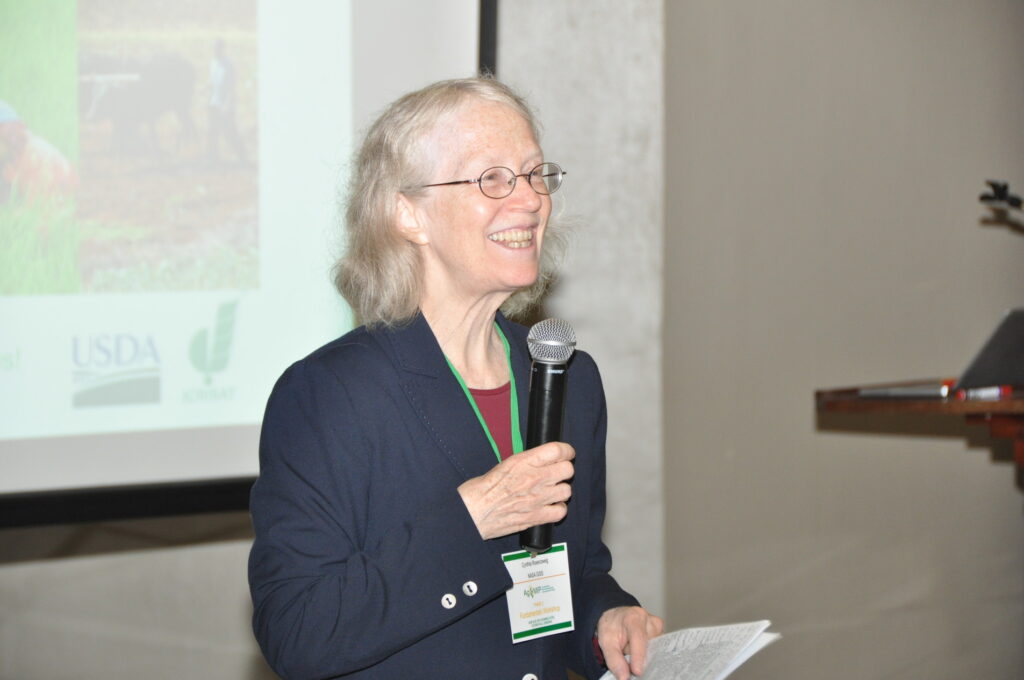
In Pakistan, for example, the research results of the AgMIP team under Rosenzweig’s leadership led the government to take steps toward mitigation and adaptation of agriculture and food systems to climate change. These actions included updating land-use planning tools, support for breeding new climate-adapted crop cultivars, and publishing many recommendations in local language bulletins to benefit the farming community. In several countries in Sub-Saharan Africa, Rosenzweig led teams to develop an innovative Regional Integrated Assessment (RIA) methodology for climate change impacts. RIA was so comprehensive and well-received that stakeholders in Ghana and Senegal, among others, called for scaling up and building capacity to apply the methodology to more regions. These research tools are being applied for designing policies to make farming and food systems more resilient to shocks related to climate and COVID-19 in Zimbabwe and other countries. Due to the dynamic nature of climate change, Rosenzweig is constantly challenging AgMIP to evolve and develop new cutting-edge tools such as the AgMIP Impacts Explorer, an interactive decision support tool that visualizes key research findings and data for educators, policymakers and technical practitioners. Researchers in AgMIP working in international and transdisciplinary teams are able to strengthen their capacity to generate actionable information for adaptation planning. Many students, especially women students, have completed their graduate studies through research with AgMIP and gone on to serve at national and international research institutions. Rosenzweig’s leadership of AgMIP has improved the scientific rigor of climate change and agricultural research, and provided the evidence base for stakeholders’ national plans and regional implementation of climate change interventions. She has directly assisted governments worldwide to enhance the resilience of their own food systems facing climate change.
Molding a Modeler
Cynthia grew up in Scarsdale, New York, in the United States. Her father, George Hardy Ropes, was a mathematics educator who introduced computers to many elementary and secondary school districts. Rosenzweig collaborated with him in 1990 to develop one of the first educational software programs on climate change, called Hothouse Planet. Her aunt, Alice Recknagel Ireys, was a renowned landscape architect. Both of them encouraged Rosenzweig’s early interest in math and nature. Her mother, Catherine Ropes, instilled her people skills and love of food shared with friends and family.

Rosenzweig was further inspired to cultivate her interests by her fifth-grade teacher, Mrs. Jean Clancy, who put daily math puzzles on the blackboard and took her classes on frequent nature walks. Rosenzweig also joined the Girl Scouts, through which she continued to explore the natural world. Rosenzweig attended Stanford University in the 1960s, where she met her husband, Arthur. The couple decided to move to Tuscany, Italy, where they started a farm, growing vegetables and fruits and raising chickens, goats and pigs. This experience was where Rosenzweig fell in love with agriculture and realized she wanted to spend her career in this field. When they returned to New York in 1972, Rosenzweig went back to school, obtaining a two-year degree in agriculture from a technical college on Long Island, where she learned practical skills such as tractor maintenance and pruning of apple trees. She and her husband and friends then started Blue Heron Farm in Thompson Ridge, New York, where they grew sweet corn, Indian corn and cucumbers for pickling. To continue her education, Rosenzweig enrolled in Rutgers University and earned a B.S. in Agricultural Sciences in 1980 and an M.S. in Soils and Crops in 1983. During her graduate studies, she began working for GISS. She received her Ph.D. in Plant, Soil, and Environmental Sciences from the University of Massachusetts in 1991.
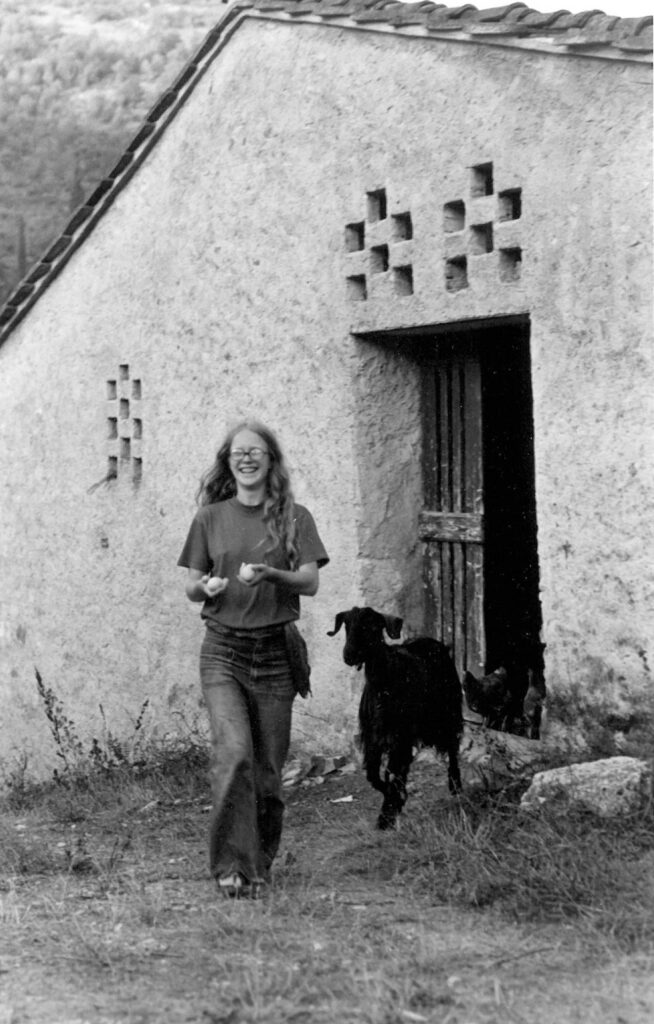
Having lived or worked in New York City for many years, Rosenzweig is well aware not only of the challenges urban centers face in adapting to and mitigating climate change, but also the great potential for cities to be leaders in implementing strategies toward climate resiliency. “I believe that we need to work on climate change wherever we are. And GISS is in Manhattan, New York City,” said Rosenzweig. Rosenzweig served as Co-Chair of the New York City Panel on Climate Change, and following Hurricane Sandy in 2012, she led the team that developed new climate projections that were the basis for the city’s $20 billion rebuilding and resiliency implementation plan. This prompted Rosenzweig and her team to start the Urban Climate Change Research Network (UCCRN) of scientists working on climate issues affecting cities. Where the IPCC focuses on responses at the national level, the UCCRN provides climate change adaptation and mitigation information specifically for urban decision-makers. The energy and insight that Rosenzweig applies to revolutionizing food systems, urban centers and research processes to address climate change, one of the greatest challenges facing us today, is helping farmers, policymakers, researchers and many more build the resilience that is needed both now and in the future to feed the world. “The climate is already changing,” said Rosenzweig. “We have a responsibility to respond and to prepare for the increasing risks of the future. Let’s roll up our sleeves and tackle this challenge now.”
Additional Links
5 Questions With … NASA Scientist Cynthia Rosenzweig
How to Improve Coastal Cities Climate Resilience: A Q&A with Cynthia Rosenzweig
Cynthia Rosenzweig and Naomi Klein in conversation with Ross Andersen
See the original post